Penang National Park

Introduction
Penang National Park (Taman Negara Pulau Pinang) is a sanctuary of biodiversity nestled on the northwest corner of Penang Island, Malaysia. Established in 2003, it is one of the world’s smallest national parks, covering just over 25 square kilometers. Despite its size, the park boasts an impressive array of ecosystems, including tropical rainforests, mangroves, coral reefs, and a meromictic lake. This rich diversity makes it a haven for nature enthusiasts, adventure seekers, and those looking to immerse themselves in Malaysia’s natural beauty.
In 2021, the Penang Hill Biosphere Reserve, which encompasses the national park, was recognized by UNESCO for its exceptional biodiversity and cultural heritage.
Address
Penang National Park Headquarters
Jalan Hassan Abas, 11050 Teluk Bahang, Pulau Pinang, Malaysia
Phone: +60 4-881 3500
Website: wildlife.gov.my
Key Facts
| Feature | Details |
|---|---|
| Location | Northwestern Penang Island, Malaysia |
| Established | 2003 |
| UNESCO Recognition | Part of the Penang Hill Biosphere Reserve (2021) |
| Area | 25.6 km² (1,213 ha) |
| Highest Point | Bukit Perangin (at 821 meters) |
| Flora | Over 1,000 plant species, including orchids, mangroves, and coastal palms |
| Fauna | 143 species, including dolphins, hawksbill turtles, and dusky leaf monkeys |
| Attractions | Pantai Kerachut, Monkey Beach, Meromictic Lake, Muka Head Lighthouse |
| Popular Activities | Hiking, wildlife watching, kayaking, snorkeling, camping |
| Operating Hours | Daily: 8:00 AM – 4:30 PM |
| Official Website | wildlife.gov.my |
Entry Ticket Fees
| Category | Malaysian Ringgit (RM) | Foreigners (RM) |
|---|---|---|
| Adults | 10 | 50 |
| Children (3–12) | 1 | 10 |
| Children (Under 3) | Free | Free |
| Guided Tours | Varies | Varies |
| Special Permits | Required for camping | Required for camping |
Note: Fees are subject to change. It’s advisable to check the official website or contact the park before planning your visit.
Key Highlights
- Pantai Kerachut – A serene beach known for turtle nesting sites and the meromictic lake.
- Monkey Beach (Teluk Duyung) – A popular spot for swimming and picnicking, accessible by hiking or boat.
- Muka Head Lighthouse – Offers panoramic views and a glimpse into the park’s maritime history.
- Meromictic Lake – A rare lake where seawater and freshwater layers do not mix, creating unique ecological conditions.
- Diverse Ecosystems – Experience a range of habitats from mangroves to hill dipterocarp forests.
Things to Do
- Hiking: Explore trails like the Pantai Kerachut Trail and the canopy walk for breathtaking views.
- Wildlife Watching: Spot species such as dusky leaf monkeys, hornbills, and monitor lizards.
- Kayaking & Snorkeling: Discover the marine life around Pantai Kerachut and Monkey Beach.
- Camping: Experience overnight stays at designated campsites; permits required.
- Photography: Capture the park’s diverse flora and fauna, especially during early mornings.
Best Time to Visit
- High/Dry Season: December to February – Ideal for outdoor activities with minimal rainfall.
- Low/Rainy Season: May to October – Expect heavier rains; some trails may be slippery or closed.
Tip: Early mornings are best for wildlife sightings and to avoid crowds.
How to Reach
- From George Town: Approximately 30 km (45 minutes) by car or taxi.
- Public Transport: Take bus 101 or 102 from George Town to Teluk Bahang, then a short taxi ride to the park entrance.
- Guided Tours: Available from various tour operators in George Town and Batu Ferringhi.
Accommodation Options
- Within the Park: Basic camping sites at Pantai Kerachut and Teluk Kampi (permits required).
- Nearby: Hotels in Batu Ferringhi and Teluk Bahang offer various options from budget to mid-range.
- Luxury/Eco-Resorts: Consider staying in eco-friendly resorts near Batu Ferringhi for a more comfortable experience.
Travel Tips
- Permits: Obtain necessary permits for camping and guided tours at the park headquarters.
- Clothing: Wear lightweight, moisture-wicking clothes, sturdy hiking shoes, and a hat.
- Safety: Carry insect repellent, sunscreen, and sufficient water.
- Eco-Friendly Practices: Avoid littering, stay on marked trails, and respect wildlife.
- Photography: Use a zoom lens for wildlife; early mornings offer the best lighting.
Nearby Attractions
- Penang Hill – A cool retreat with colonial architecture and panoramic views.
- Penang Butterfly Farm – Home to over 4,000 butterflies and various other insects.
- Teluk Bahang Dam – A serene spot for picnics and photography.
- Penang Butterfly Farm – A tropical sanctuary showcasing over 4,000 butterflies.
- Turtle Conservation Centre – Located within the park, it’s dedicated to the protection of sea turtles.
Conclusion
Penang National Park offers a unique blend of natural beauty, adventure, and cultural heritage. Whether you’re an avid hiker, wildlife enthusiast, or someone seeking tranquility amidst nature, the park has something to offer. Its diverse ecosystems, rich biodiversity, and serene landscapes make it a must-visit destination for travelers to Penang.



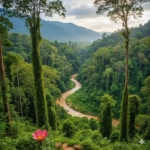
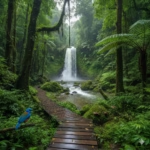
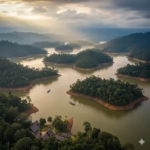
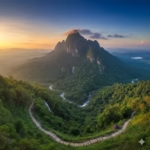


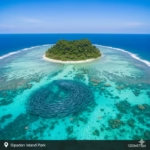
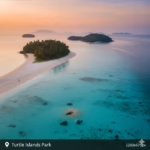
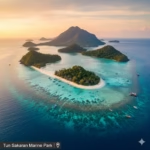
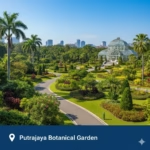


Comments are closed.